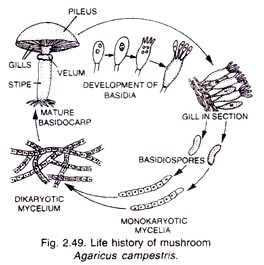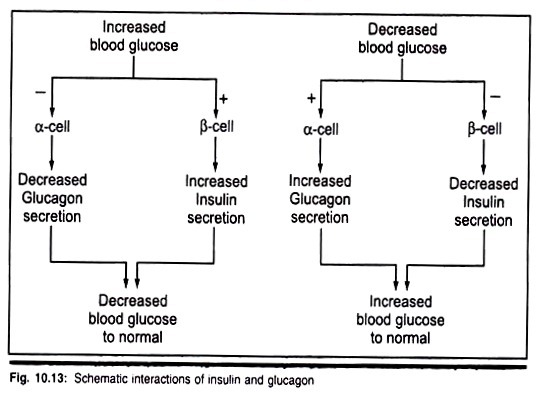ADVERTISEMENTS:
Mendel’s Laws for Inheritance of Traits in an Organism!
Gregor Johann Mendel (1822-84) was an Austrian monk and botanist. He is regarded as the father of genetics.
He applied his knowledge of science and mathematics to his experiments on pea plants and established the principles of genetics.
ADVERTISEMENTS:
Though the results of his experiments were published in 1866, they remained virtually unknown until 1900.
In 1857, Mendel began a series of experiments on the pea plant (Pisum sativum) to study the pattern of inheritance of various characters. He chose pea plants for three reasons. First, pea plants are self-pollinating. Second, they are easy to cultivate. Third, they have sharply defined characters.
Mendel chose to study seven different characters in pea plants. Each of these characters such as height, seed shape, seed colour, etc., had two sharply defined and contrasting traits (e.g., tallness and dwarfness, round seed and wrinkled seed, yellow seed and green seed).
He crossed a variety of pea plant carrying a particular trait (e.g., tallness) of a character (such as height) with another variety having a contrasting trait (e.g., dwarfness) of the same character. These two plants were considered as the parental generation (P). The generation that was produced by crossing these two was called the first filial generation (F1). When F1 plants were crossed among themselves, the generation that was produced was called the second filial generation (F2).
The results of Mendel’s experiments showed the following:
ADVERTISEMENTS:
1. Whenever two traits of a character were crossed, the F1 plants showed only one of the traits; the other trait never appeared. It did not matter whether the trait came from the pollen or the egg.
2. The trait that did not appear in F1 reappeared in F2, but in ¼ of the total number of plants.
Mendel called the substance responsible for each trait a ‘factor’. He explained that each genetic character was represented or controlled by a pair of unit factors, or elements. (Later on. the unit factors became known as alleles or allelomorphs.
When the term ‘gene’ was coined and defined, the allele became synonymous with the gene.) One of the alleles came from one parent and the other from the other parent. The first-generation plants of Mendel’s experiment were all tall plants. But the allele representing dwarfness was neither destroyed nor altered.
It could not be expressed in the first generation because it was dominated by the allele representing tallness. In other words, the allele for tallness was dominant and the allele for dwarfness was recessive.
Notations used in Mendel’s experiments:
The dominant trait is usually represented by a capital letter. For example, tallness is represented by T and dwarfness is represented by the corresponding small letter t. If tallness is due to a pair of dominant alleles, it is written as TT. If tallness is due to only one dominant allele, it is written as Tt. If both the alleles are recessive, making the organism dwarf, then it is written as tt.
A homozygous condition is one in which both the alleles are of the same nature, e.g., TT or tt. A heterozygous condition is one in which the alleles are of different nature, e.g., Tt. When two characters are taken into account, the notation for the homozygous dominant could be AABB, and for the homozygous recessive it could be aabb.
Inheritance of one character:
When the tall plants in F1 were crossed among themselves, the F2 generation had 75% tall plants and 25% dwarf plants. Thus, the phenotype ratio was 3: 1 (see Figure 7.3). These led Mendel to conclude that the alleles representing dwarfness were intact and were neither lost nor altered. Mendel’s experiment with one character (monohybrid cross) led to the formulation of the law, or principle, of segregation. It states that although the alleles of a character remain together, they are separated in subsequent generations.
Independent inheritance of two separate characters:
After studying the inheritance of the contrasting traits of one character, Mendel went on to perform an experiment with two characters (dihybrid cross). He crossed a plant having round and yellow seeds with a plant having wrinkled and green seeds. All the F1 plants had round and yellow seeds.
ADVERTISEMENTS:
When a certain number of F1 plants were crossed among themselves, they gave rise to four types of seeds. Of these, 315 seeds were round and yellow, 108 were round and green, 101 were wrinkled and yellow, and 32 were wrinkled and green. Hence, their phenotype ratio was about 9:3:3:1 (see Figure 7.4).
What does this result indicate? It indicates that the chances for the pea seeds to be round or wrinkled do not depend on their chances to be yellow or green. Each pair of alleles is independent of the other pairs. This is the principle of independent assortment.
ADVERTISEMENTS:
Mendel’s studies provided a breakthrough in our knowledge of heredity. While formulating the principles of heredity, Mendel stated that the units of heredity (which he called ‘factors’) controlled the inheritance of characters. (This view is radically different from an earlier view held by some scientists.
These scientists held that characters mixed like paints of different colours. When brought together in the zygote, they got mixed and could not be separated again. This blending of characters gave rise to intermediate characters.)
What Mendel could not determine was the nature of the ‘factors’. Now, scientists have not only come to know about the physical location of these hereditary units (genes) but have also discovered their molecular compositions. The unraveling of the physical basis of heredity is regarded as the most fascinating history of modem biology.
Mechanism of expression of traits:
A gene contains the information for making proteins in the cell. The proteins synthesized according to this information may be enzymes that catalyse biochemical reactions. Each trait is the outcome of several such biochemical reactions, each of which is controlled by a specific enzyme.
ADVERTISEMENTS:
If the enzyme is not produced because its gene is absent, that particular reaction will not occur and the trait resulting from its reaction will not appear phenotypically. Thus, each trait is controlled by a gene.
Each parent contributes one copy of the gene for a particular character. Thus there are two genes for every character. In the gamete, however, only one copy is present because of reduction division. What Mendel perceived was that each gene (allele) is an independent unit which is neither linked with nor influenced by the other gene. Also, each allele can be separated in gametes.


